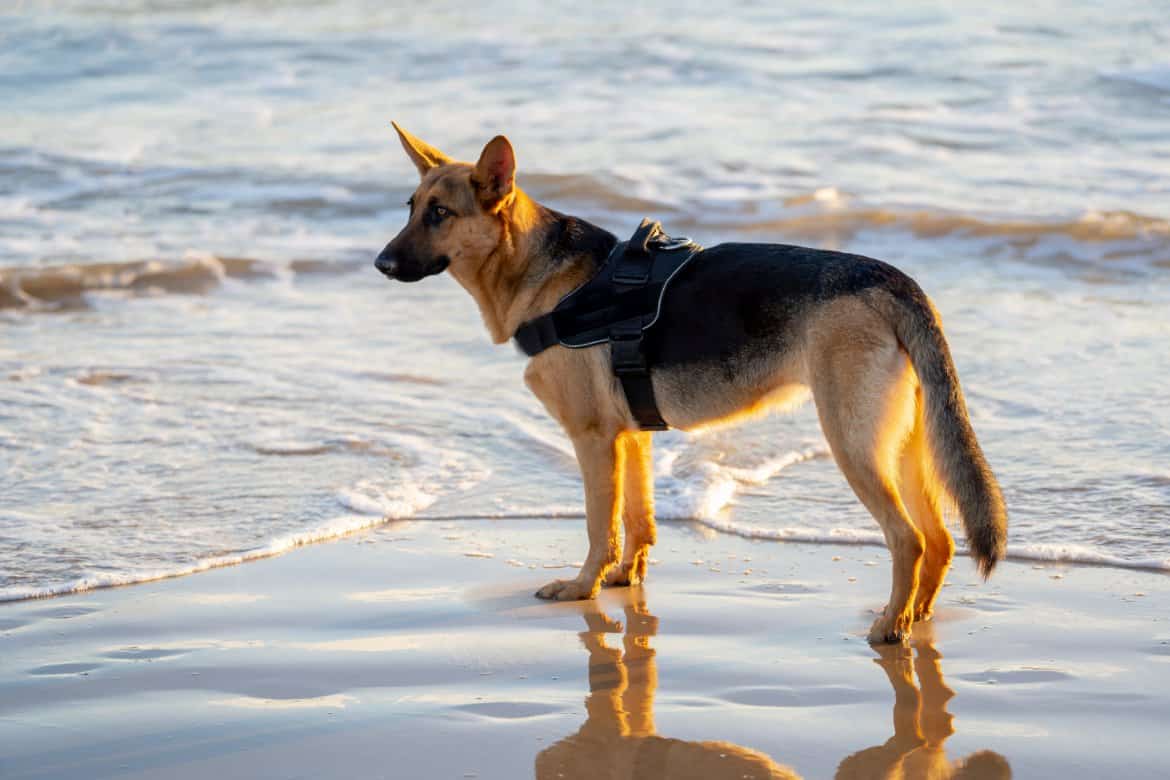Dogs have legs – four, to be exact – and they sure know how to use them. Have you noticed dogs often have longer legs in the back? Canine bodies form in a unique way that enables them to move fast, run, and jump. Let’s look at some common questions related to the length of our pet’s hind legs.
Why are my dog’s back legs longer than the front?
There are a few reasons why your dog may have longer legs in the back than in the front. If your dog is of a particular breed, it may have longer back legs. Breeds trained for dog shows and running may often have a high rear appearance due to longer back legs.
Do you have a young dog still in the puppy stage? It may simply still be adjusting to its body during a growth spurt.
Unfortunately, long hind legs in a dog can be a sign of an underlying health issue such as hip dysplasia. This painful condition occurs when the hip joints become loose or deformed. Any breed can be affected by this condition. Dogs of all ages can also suffer from it. It is most common in larger breeds of dogs such as Labradors.
How can you tell if your dog is suffering from hip dysplasia or has healthy long hind legs? If your dog suffers from hip dysplasia, the back legs will often become stiff. This stiffness makes the hind legs appear longer than they really are. Other signs of this disorder include hopping while running, inability to jump, limping, and reduced activity.
While it is not a life and death issue, your dog could be a dwarf. In the pursuit of having a cute version of a big dog, some breeders will breed large dogs with tiny dogs.
So how can you spot dwarfism in your dog? Look out for a disproportionate head, spotty coats, and an abnormal bone structure inconsistent with its breed. Pay attention to the growth of other dogs of the same age and breed. If your dog exhibits slower growth than those other dogs, it is displaying another sign of dwarfism. Don’t worry, a dwarf dog can still live a happy and normal life. You may have to make some extra trips to the vet and be knowledgeable about various accommodations for it.
Is it normal for a dog to have longer back legs?
Having longer legs in the back is perfectly normal and healthy for a dog unless the dog appears to be in pain or discomfort. Some breeds naturally have longer legs in the back. If your dog yelps in pain upon being touched on its back leg joints or appears to be less active, this is cause for concern.
Your pup’s longer legs may be an abnormality if it is causing an imbalance or preventing your dog from running, jumping, or walking upstairs.
Highly athletic breeds such as Chesapeake Bay Retrievers and Old English Sheepdogs naturally have high rear legs. The muscular back legs of the Chesapeake Bay Retrievers make them excellent swimmers that can endure long swims in cold icy waters. The high back legs of an Old English Sheepdog give their backs a slight slope and provide great agility for hunting animals.
It is also normal for a dog to have longer back legs if it is a mixed breed. Certain breed standards require taller back legs. So, if one breed that usually has more even legs is mixed with a different breed known for tall back legs, the body composition may be affected.
Do some dog breeds have longer front legs?
Some dogs have very long legs in general. As mentioned earlier, some breeds naturally have longer back legs. However, it is not common for any dog to have longer front legs. If your dog has longer front legs, it most likely has some deformity.
The following dog breeds have legs that would be perfect on any catwalk:
- Scottish Deerhounds
- Great Dane
- Irish Wolfhound
- Akbash
- Borzoi
- Afghan Hounds
The long front and back legs of these above canines make them ideal guard and hunting dogs.
Why does my puppy have longer back legs?
Remember, your puppy is nothing more than a baby dog. Its body is still growing. Like a human child or adolescent, its body may go through awkward growth spurts that make the body appear uneven at times. Different body parts will grow faster than others, resulting in lopsided compositions which eventually even themselves out.
For example, Labrador puppies often have longer back legs. The main reason for this is the legs have not finished growing yet.
If your puppy is less than two years old, take a breath and calm down. Your fur baby will most likely grow into its longer hind legs.
Do puppies grow disproportionately?
Sometimes a puppy will grow disproportionately. If your puppy currently has disproportionately long back legs, don’t sound the alarm yet. Your fur babies will grow the fastest between the age of three to five months.
By the time your puppy is 12 weeks old, it is considered an adolescent. At this point, its growth rate will slow down. However, it will continue to grow for the next several months. Its growth plates are still open at this time, so make sure you keep the growing pup’s joints safe.
In the case of some larger breeds, there may be a second growth spurt at six months. By the time your puppy is two years old, its growth should be complete. So remember, until your puppy reaches 24 months, its body can still balance out if it is currently disproportionate.

